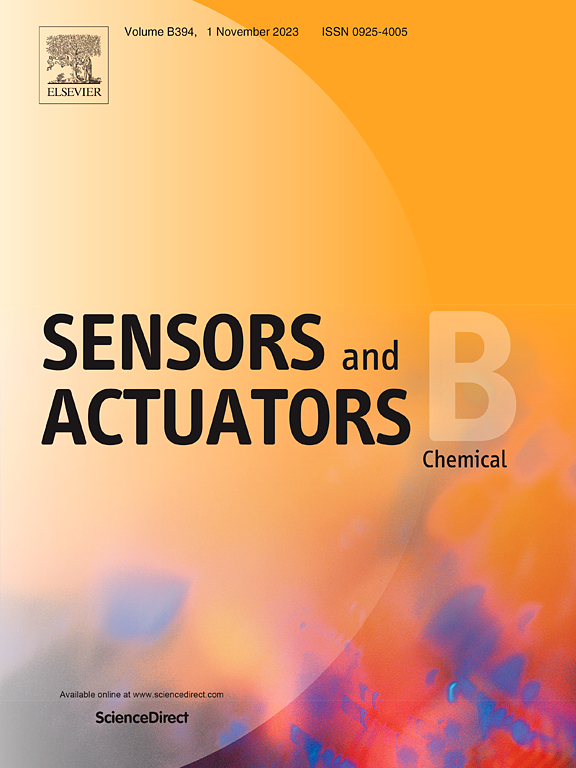A flexible substrate-free electrochemical tattoo sensor with alcohol transfer printing method for real-time monitoring of sodium ions in sweat
IF 3.7
1区 化学
Q1 CHEMISTRY, ANALYTICAL
引用次数: 0
Abstract
Tattoo sensors, known for the ultrathin and highly flexible nature and excellent adhesion to human skin, have attracted significant attention in recent years. In this study, a flexible, substrate-free electrochemical tattoo sensor is developed based on nickel-dropped EGaIn (Ni-EGaIn), utilizing an alcohol transfer printing method for real-time sodium ion monitoring in human sweat. This novel printing technique is both simple and rapid, offering exceptional precision and accuracy when applied to human skin. The resulting tattoo sensor maintains strong adhesion under bending (0–150°) and twisting (0–360°) conditions. Furthermore, acid-treated multiwall carbon nanotubes (MWCNTs) are introduced to chitosan-prussian blue nanocomposites (ChPBN), which significantly enhances the conductivity and sensitivity (104.23 mV/decade) of the ion-selective electrode (ISE). Experimental results confirm that the MWCNTs/ChPBN-based electrochemical tattoo sensor exhibits impressive recovery rates for sodium ion detection in human sweat samples, while this sensor can also operate effectively across a broad temperature range (−20℃ to 80℃). This work introduces an innovative, efficient method for fabricating flexible, substrate-free tattoo sensors for electrochemical biomarker monitoring in human biofluids.
一种用于实时监测汗液中钠离子的柔性无基材电化学纹身传感器
纹身传感器以其超薄、高柔韧性和与人体皮肤的良好粘附性而闻名,近年来备受关注。在本研究中,基于降镍EGaIn (Ni-EGaIn)开发了一种柔性,无衬底的电化学纹身传感器,利用酒精转移打印方法实时监测人体汗液中的钠离子。这种新颖的打印技术既简单又快速,当应用于人体皮肤时,提供了卓越的精度和准确性。由此产生的纹身传感器在弯曲(0-150°)和扭转(0-360°)条件下保持强大的附着力。此外,将酸处理的多壁碳纳米管(MWCNTs)引入壳聚糖-prussian蓝纳米复合材料(ChPBN)中,显著提高了离子选择电极(ISE)的电导率和灵敏度(104.23 mV/decade)。实验结果证实,基于MWCNTs/ chpbn的电化学纹身传感器在人体汗液样品中具有令人印象深刻的钠离子检测回收率,同时该传感器还可以在较宽的温度范围(-20℃至80℃)内有效工作。这项工作介绍了一种创新的、有效的方法来制造柔性的、无衬底的纹身传感器,用于人体生物体液中的电化学生物标志物监测。
本文章由计算机程序翻译,如有差异,请以英文原文为准。
求助全文
约1分钟内获得全文
求助全文
来源期刊

Sensors and Actuators B: Chemical
工程技术-电化学
CiteScore
14.60
自引率
11.90%
发文量
1776
审稿时长
3.2 months
期刊介绍:
Sensors & Actuators, B: Chemical is an international journal focused on the research and development of chemical transducers. It covers chemical sensors and biosensors, chemical actuators, and analytical microsystems. The journal is interdisciplinary, aiming to publish original works showcasing substantial advancements beyond the current state of the art in these fields, with practical applicability to solving meaningful analytical problems. Review articles are accepted by invitation from an Editor of the journal.
 求助内容:
求助内容: 应助结果提醒方式:
应助结果提醒方式:


